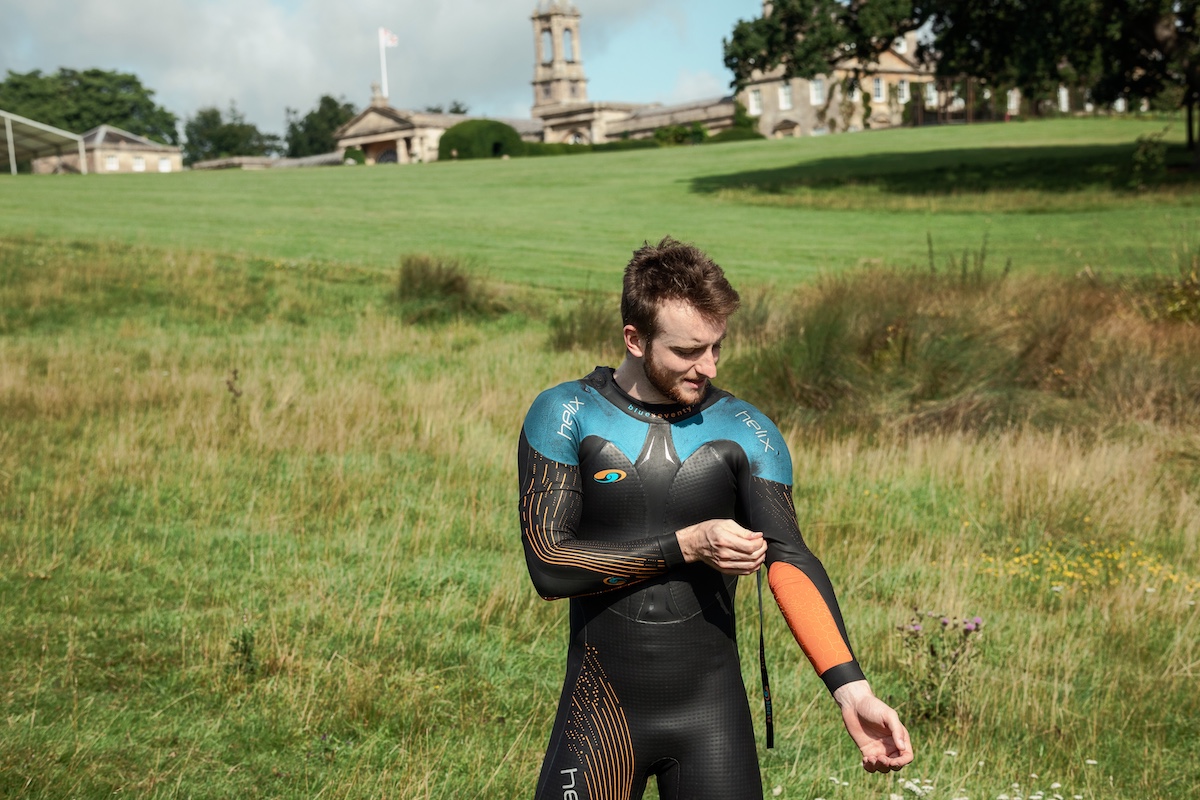Triathlon race-day: How to do a course recce
Knowing the course can mean the difference between success and failure. Here we explain how to do a course recce to give you the best possible chance come race day...

Winter training has passed and hopefully you’ve navigated the rain, wind, cold and darkness and come out the other side feeling relatively prepared for your summer triathlon season ahead.
For months, you’ve racked up volume in search of greater aerobic capacity, increased fat burning and improved technique. Now, it’s time to make things more course specific. And that means a good, structured course reconnaissance.
Knowing exactly what confronts you, whether you’re facing the Eton Supersprints or Ironman Wales, will dilute the surprises, settle (-ish) the nerves and result in your best effort on any given day. That’s why we’ve brought you proven methods to plan your best race yet.
They’re easily actioned and will make a huge difference not only to your overall time, but also your enjoyment.
What we don’t delve into is the detail of race week, namely your taper. That’s fine as this piece is more about logistical planning than the physiology.
However, as a brief overview, studies show that in the final week before your goal race, a moderate and decreasing amount of high intensity during a taper week produces better endurance performance than either total rest or slow, easy training.
That’s because high-intensity training maintains or even improves muscle-recruitment patterns. Ignore this and there’s a good chance you’ll feel flat and sluggish on race day.
For now, let’s see how you can start planning your perfect race…
10 ways to perfect the course recce
Get to know where you’ll be racing from the inside out. Follow these key pointers for strategically figuring out the lie of the land ahead of race day…
1. Be a local know-it-all

While a goal race for many of you will involve travel and accommodation, build-up races or a newcomer’s debut triathlon will most likely be local. This affords you the perfect opportunity to recce the course within a whisker of its life.
You’ll be able to train on the bike and run parcours, and potentially the swim, too. If the latter’s not possible, you can always observe.
We know one South-East triathlete who would often take the opportunity to veer off the M4 to check out the Windsor river swim in wintertime because that’s when it’s at its “best flow”, so they could see where the main channels were and where they would be in the best position.
2. Chunk it
Breaking your race down into chunks allows you to focus on more manageable sections and will ease nerves associated with the enormity of the challenge.
Buoys are a natural chunking tool in the swim, while turnaround points or hills are similar on the bike. When it comes to the run, make these chunks closer together as this helps when heavily fatigued.
3. Visualise achievement
Visualisation is a common psychological tool to run through in your mind’s eye key sections of the race – this could be a series of technical descents or the swim start, for instance – which will hopefully decrease race anxiety and boost confidence.
Find a quiet space and make your visualisation session as realistic as possible, as studies show that it’ll be more effective in activating the relevant brain regions.
Things to think about are how does it feel to race well? What are the sounds that are synonymous with your performance environment? Is there a particular smell of your racing gear that you can recreate?
4. Get into the water

If you arrive at your event a day before the race itself, spend time planning out your swim as this is generally the hardest discipline to recce online.
Look at the course and see how visible the buoys are. If they’re hard to see, pick a clearer landmark behind for navigational purposes the following day.
If it’s a sea swim, wander into the sea around the area where it’ll start to check footing underneath. It might save a twisted ankle.
5. Get social
Message boards and forums are swimming with course-specific information to help you plan your race. Many races, or the clubs organising them, will have active Facebook pages where you can swap event thoughts.
And put a call out on social channels like Twitter to ask the Twitterati triathletes for their race input, too.
6. Plan, plan, plan
Yep, it’s not the sexiest of tips but ensure you plan your race routine with military precision. This is where a checklist comes in. You should have one for all the gear you’ll need on the day, from suitable clothing to nutrition.
Also, write down how your race build-up will play out, from what time you need to leave for the pre-race hotel to what time to wake for breakfast.
Other key things to note are car parks close to the race start and any potential traffic hold-ups.
7. Have a pacing plan

If you line up at the start and have no clear idea of your swim, bike and run pace for the distance ahead, nerves could easily transcend into fear. So make sure you have a pacing plan.
This is where a power meter, heart rate monitor and bike computer all come in useful. Not only will you know what pace is sustainable, you’ll also keep your ego in place if loads of triathletes storm past you on the bike.
Let them go, and instead follow your pacing plan. If they don’t have one, there’s a good chance you’ll soon be passing them on the run.
8. Work back
Your training should be course-specific, so recce early and work backwards. If the parcours features a bike with several thousand metres of climbing and you spend the build-up on pancake-flat roads, you could be in trouble come your big day.
9. Utilise technology
The digital age has made it much simpler to recce triathlons all around the world. Google Maps is a popular recce tool used by many, especially the street-view option to pinpoint places of change in a race.
Where you see hedgerow end, for example, you might be exposed to a side wind that could affect your handling if taken by surprise.
Online outfit VeloViewer cranks this up to the next level with engaging 3D models of bike segments and gradient changes of hills. You can use it free, though you can enjoy more features for £10-£20 a year.
10. Match your gear
Your equipment and clothing should match your chosen race. For instance, if it’s a race renowned for winds sweeping off the coast, maybe leave the disc wheel at home.
If it’s historically a scorcher, ensure you have a nailed-down hydration strategy to see you through. And if the water’s equally as warm, practise non-wetsuit open-water swimming.
Top image credit: OSB Events




